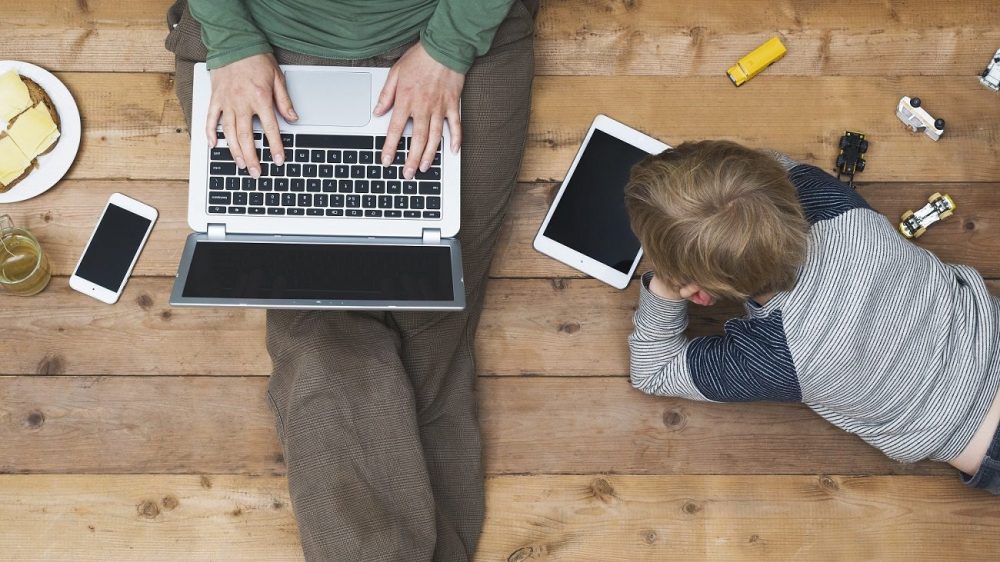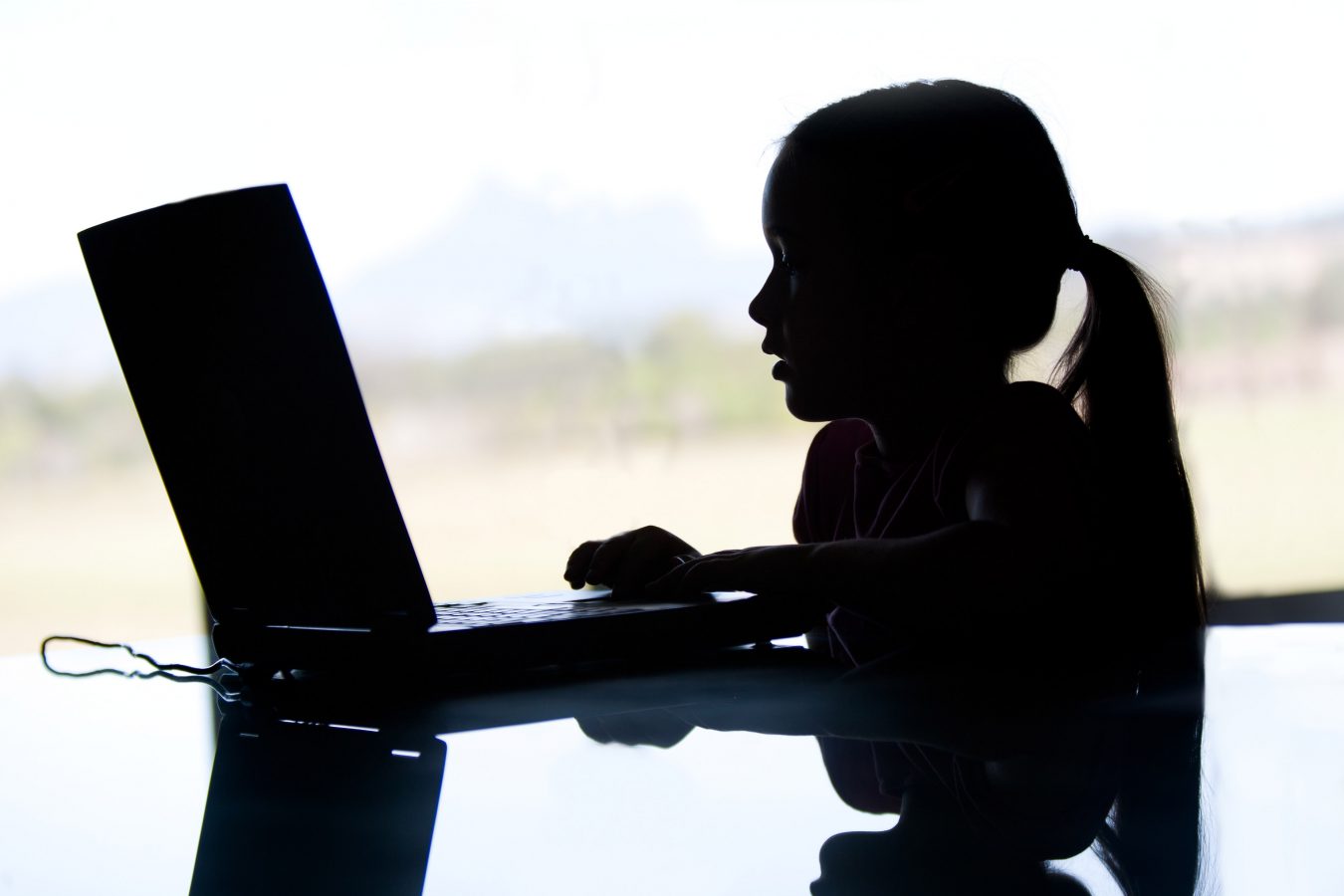
The internet means that if you and your family have to stay home, it’s easier than ever to stay connected. But it’s important for everyone to stay safe and mentally healthy. Here’s an invaluable virtual safety kit from the eSafety Commissioner Julie Inman Grant and her team.
Whether through choice or necessity, an increasing number of people are staying home as COVID-19, a new strain of coronavirus, sweeps the globe. It’s a worrying time, with implications for personal wellbeing right through to international stability.
The upside, if it could be said there is one, is that compared to any other period in history it is now far easier to limit face-to-face contact while keeping in touch with the outside world. The internet is a great tool for fending off the feeling of isolation, allowing us to socialise, study, shop and be entertained online.
A growing number of people can also work from home, thanks to the internet. But for many others, social distancing or quarantine means the loss of an income, adding to frustration and financial stress.
To make the best of being stuck at home, it is important to ensure you can find reliable information, stay connected with family and friends, help your children stay safe online – and stay mentally healthy too.
That last one can be particularly challenging, if you are facing the prospect of being cooped up with bored and restless kids or teens for an unusually long period!
So at eSafety we have put our heads together (though not too closely) and come up with this virtual safety kit, packed with evidence-based suggestions and trustworthy links to help you through.
How to monitor the situation
There’s a lot of fake news and misinformation about COVID-19 being spread across the internet, so stay alert!
Avoid getting caught up in the hype and fear.
Select one or two reputable information sources for your news, to avoid false reports and unscientific claims. The major national and state news services provide regular online, television and radio bulletins.
The Department of Health’s coronavirus news alert provides daily updates on cases across Australia and the most up-to-date advice for preventing and responding to COVID-19, including translated resources.
Each state and territory health department also has information on its website:
- NSW — Department of Health
- VIC — Department of Health and Human Services
- QLD — Queensland Health
- WA — Department of Health
- SA — SA Health
- NT — Department of Health
- TAS — Department of Health and Human Services
- ACT — ACT Government Health
Beware of false information and scams
- A Coronavirus cure? Don’t be ripped off by the online offers – currently there are no vaccines for COVID-19, but there are lots of dodgy pills and fake remedies.
- Don’t click on text message links about COVID-19, even if they look like they are from the government – scammers are exploiting the hunger for information to spread malware and phishing scams. Australian Government agencies will never send a text containing weblinks.
- Be suspicious of COVID-19 emails too, especially if you do not recognise or trust the address. They could contain a link to a fake website where you are encouraged to enter confidential details that scammers use to steal your money.
- Check COVID-19 information apps very carefully – some mimic reputable sources such as the World Health Organisation.
- To stay up to date on the latest online threats and how to respond, you can sign up to the Stay Smart Online Alert Service.
- You can report scams to Scamwatch.
Take breaks from your newsfeed
- While news sources, social feeds, ads and emails are dominated by COVID-19 it can be easy to overload.
- To manage your anxiety levels, try turning off your notifications and using apps or built in features to monitor or limit how much time you spend online.
- Try other activities like reading something you enjoy or playing games.
- Take regular breaks – put down your phone or walk away from your screen.
- Beyond Blue has further useful advice and you can access eSafety’s wellbeing directory for more online services.
How to stay connected
Although it may be necessary for you to physically isolate yourself from other people during the coronavirus outbreak, it is vital to stay in touch with friends and family. No matter what your routine, regular online contact can help to relieve loneliness and boredom.
- Set up a regular time to video call or send messages to family and friends throughout the day.
- Join or set up a social media support group for your neighbourhood.
- To help maintain contact with older parents, grandparents and neighbours download the Get Started app – it has great tips for helping them get online safely. Then they can visit the Be Connected website run by eSafety, which has lots of easy-to-follow guides for older people including information about making video calls, using social media and shopping online. There’s also specially tailored advice for coping with COVID-19.
How to help kids stay safe online
Has your child’s daycare or school shut down? Have holidays started early? Are you playing it safe or just staying home with the kids more because their usual activities have been cancelled?
Whatever the reason, COVID-19 is likely to mean young people spending more time at home, and online. There are a lot of great ways they can use connected devices to learn and play, but there are also risks that you can help them avoid.
eSafety has a wide range of advice for parents and carers covering common online safety issues like managing screen time, cyberbullying, inappropriate content, sending nudes and contact from strangers. We also have basic online safety advice for parents in languages other than English.
Here are some steps to help protect young people:
- Start the chat
It’s not possible to be at your child’s side every second of the day, so it’s important to talk with them about online safety issues to help develop their critical thinking and ability to make good choices. It’s also good to let them know they can come to you for help if they have any concerns. You may feel they know more about the latest technology than you do, but you have more life experience to guide them.
- Take the opportunity to set some boundaries around when and where they can use devices like tablets, smart TVs and gaming consoles, to help limit potential tech tantrums — you could even fill in an Early Years Family Tech Agreement.
- While you are all at home more, it’s a great time to co-view and co-play with your kids, so you can understand what they are doing and experiencing online.
- Learn about the games, apps, social media and platforms they are using at The eSafety Guide, including how to protect their information and report inappropriate content or conduct.
- Encourage them to explore eSafety’s targeted advice for kids (primary school) and young people (secondary school).
- Check eSafety’s tips for talking with your child about tricky personal subjects like online pornography.
- Use parental controls and safe search options
Parental controls can help block your child from accessing specific websites, apps or functions. They can also monitor your child’s use of connected devices and set time limits. But beware! You cannot always rely on them – they should be used in combination with other online safety strategies.
- Parental controls are available on most tablets, smartphones, computers, TVs and gaming consoles.
- You can also download family safety controls or buy robust filters out of the box.
- You can set up child-friendly search engines, or select safe search settings on digital devices, to help prevent your child from stumbling across inappropriate sites and content.
- Check smart toy settings
It’s surprising how many toys or devices can connect online these days, from drones and smart teddies to tablets and wearables. While they can be both entertaining and educational, they can reveal your child’s personal details and location – and allow other people to contact them without you knowing. You can help keep them stay safe by:
- setting strong passwords
- turning off location settings
- limiting the amount of personal information shared.
The eSafety Gift Guide has advice on what to check for and how to stay safe.
- Look out for unwanted contact and grooming
Unwanted contact is any communication that makes your child feel uncomfortable or unsafe, even if they initially welcomed the contact. It can come from a stranger, an online ‘friend’ or even someone they actually know. At worst, it can involve ‘grooming’ – building a relationship with the child in order to sexually abuse them.
You can help by:
- making sure their accounts are private – including chat functions on games
- encouraging them to delete requests from strangers and any contacts they don’t know in person
- reporting and blocking anyone suspicious on a website or service
- remembering that if they become aggressive or threatening you should contact your local police.
- Know the signs of cyberbullying
Kids who are bored by long periods at home can pick at each other, and that happens online too. So it’s important to keep an eye out for cyberbullying. It can include mean posts, comments and messages, as well as being left out of online group activities like gaming.
- Remember, when they are away from school, kids have less access to their usual support systems, including friends, teachers and counsellors.
- eSafety research shows that 14 is the average age of kids who are cyberbullied, girls are more likely to be affected than boys and the person doing the bullying is generally someone they know from school.
- Watch out for signs like your child or teen appearing upset after using their mobile, tablet or computer, being unusually secretive about their online activities or becoming withdrawn.
- Cyberbullying can make social isolation worse and the longer it continues, the more stressed kids can become, impacting on their emotional and physical wellbeing.
What to do if your child is being cyberbullied
As parents, our first instinct may be to ban our children from social media, disable the wi-fi or turn off the data access. But this can actually compound the problem, making your child feel as if they’re being punished and heightening their sense of social exclusion.
There are four simple steps that can help minimise the harm:
- report the cyberbullying to the social media service where it is occurring
- collect evidence of the cyberbullying material
- if the material is still public 48 hours later, make a report to eSafety — we work with social media platforms to have the harmful content removed.
- block the offending user.
Extra help for educators
eSafety has prepared information for school leaders to share with staff in the event of school closures and the move towards online learning.
How to look after yourself
Setting boundaries around your own screen use and sticking to them can help maintain balance and provide a positive example for young people.
If you’re also stuck at home:
- Manage your expectations: you may not be as productive if you are working from home without your usual equipment and routine, or with family interrupting you.
- Step outside for a change of scene: even a walk around the block can relieve some of the frustration, when social visits or a workout at the gym are not an option.
- Allow extra time for everything: with fewer people providing customer service and more shopping online for groceries, medicines and deliveries of food there are likely to be delays and cancellations. Plan ahead and think of some alternatives in case what you want is unavailable.
If being at home for a long time is proving very hard, contact a free parent helpline or one of the other many great online counselling and support services for help.
Kids, teens and young adults can contact Kids Helpline, which has lots of great information for parents too.
I hope you, your family and your friends stay well and (e)safe!
Thanks to the Office of the eSafety Commissioner for sharing this post with The Parents’ Website Community. You can read the original here.
Like this post? Please share using the buttons on this page.
Subscribe


